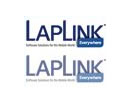'ZDNET Recommends': What exactly does it mean?
ZDNET's recommendations are based on many hours of testing, research, and comparison shopping. We gather data from the best available sources, including vendor and retailer listings as well as other relevant and independent reviews sites. And we pore over customer reviews to find out what matters to real people who already own and use the products and services we’re assessing.
When you click through from our site to a retailer and buy a product or service, we may earn affiliate commissions. This helps support our work, but does not affect what we cover or how, and it does not affect the price you pay. Neither ZDNET nor the author are compensated for these independent reviews. Indeed, we follow strict guidelines that ensure our editorial content is never influenced by advertisers.
ZDNET's editorial team writes on behalf of you, our reader. Our goal is to deliver the most accurate information and the most knowledgeable advice possible in order to help you make smarter buying decisions on tech gear and a wide array of products and services. Our editors thoroughly review and fact-check every article to ensure that our content meets the highest standards. If we have made an error or published misleading information, we will correct or clarify the article. If you see inaccuracies in our content, please report the mistake via this form.
LapLink Everywhere 2.0


LapLink Everywhere 2.0
pros and cons
- Cheap to run and easy to use Provides good file transfer and remote email access facilities New remote desktop a welcome bonus.
- Email choice and support still limited File access privileges not granular.
It seems like only yesterday that LapLink, a company long synonymous with file transfer technology, added an online service to its software portfolio, LapLink Everywhere. That was version 1.5. Just a couple of months later, it has released an updated version, 2.0, which aims to address some of the more glaring shortcomings found in the original release.
The basic premise of the LLE service remains the same - it's a remote access tool that lets you access up to three Windows PCs. Its selling point is that no client software is required; all you need is a browser-enabled device, be it Mac or PC, PDA or Smartphone. The software itself is free to download from the LapLink site but the service isn't -- you pay a monthly fee of $9.95 for the privilege, or $89.95 annually, unchanged from the new release. However, if your want to access the new remote desktop feature, then you'll need to spend an additional $4.95 per month ($30 per year), although one hour per month is free. LapLink Everywhere also comes bundled with the £149 LapLink Everywhere Deluxe suite. This includes 12 months of the basic LapLink Everywhere service, LapLink Gold and the new Remote Network Accelerator.
LLE doesn't actually open applications on the remote PC, but opens the data file and renders it in HTML, formatted for the client device in use. The first version was limited to Outlook and Outlook Express email clients, a significant limitation. This has been relaxed only slightly in LLE 2.0 which now lets you send file attachments via most SMTP email clients. Other Outlook improvements include support for Public Folders and multiple PST files. LLE now also supports access from PDA devices, reformatting the content for smaller screens. A link lets you manually toggle between PDA and PC, something we had to do with an Orange SPV Smartphone in order to use it, as its 'IE Lite' browser was unhappy in PDA mode. There are also a plethora of small but useful speed-ups and shortcuts scattered throughout version 2.0.
However, the biggest improvement is the inclusion of full-blown, remote desktop control, a feature conspicuously absent in the original release. Despite LapLink's long pedigree in the remote control department, it has looked to the Open Source lobby for this new component. LapLink has written its own Windows version of the popular freeware package VNC, modified by LapLink to use 128-bit SSL encryption. This component is downloaded separately and will require minor reconfiguration of your firewall for it to work.
For corporate users, LapLink Everywhere provides remote access to SQL databases. It also supports electronic forms processing and can connect to E-Fax, a third-party fax service. Security is based on 128-bit SSL encryption and accounts are protected by user name/password access. It will also work from behind most firewalls, a clever trick indeed but we still had trouble getting it to pass through a Microsoft ISA Server, a combined proxy and firewall.